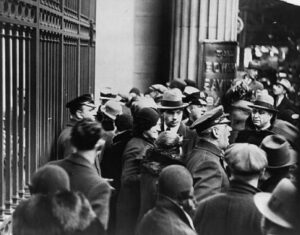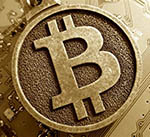There are three kinds of people when it comes to cybercurrency: those who buy it, those who own a business and receive it for payment or want to receive it, and those who don’t care to do either. We, at JG Pro, deal with the first two types of people. To understand the issue, we must understand the difference between paper dollars, crypto and precious metal.

The Federal Reserve System, known as the Fed, is the central banking system of the United States of America. Created on December 23, 1913, the Fed was designed to get control of the monetary system by creating Central Banks. Today it influences the economy by raising and lowering interest rates and creating more cash to maintain low inflation, high employment rates, and manufacturing output. Called the petrodollar, this form of currency indirectly gets it value from the price of a barrel of oil. And like a well-oiled machine, it’s the means to lubricate the pockets of crooked politicians while no one is looking.
The Fed was not able to prevent the Great Depression that followed the stock market crash of 1929. Overnight, hundreds of thousands of customers began to withdraw their deposits until banks had no cash and would extend no credit. Our economy bottomed out, businesses failed, farmers couldn’t pay their bills and workers lost their jobs. The only ones ready for that crisis were the bankers who held the money and anyone who had tradable assets in their hands. What other asset is there beside dollars? Enter cryptocurrency.


Bitcoin, created in 2009, is the oldest crypto currency but not the ony one. It isn’t a literal coin as we know it, but a list of transactions recorded on a shared digital public ledger called a “block chain”. All “coins” are stored in digital “wallets” and can be verified against the ledger. Verifying transactions is done using cryptography in a process known as “bitcoin mining”. Bitcoin is set to allow one block to be added to the chain every ten minutes by miners. When transactions are added, new coins are created and paid to miners. This process helps control the rate at which new currency is introduced to the bitcoin economy and helps protect against fraud.
“Easy come, easy go” is the best way to explain dealing with USD (U.S. dollars). The Dodd-Frank Bill of 2010 was supposed to prevent another debacle like the JP Morgan bailout in 2019. But what it really does is make the money you have in the bank belong to the bank with another run. But it’s not just your cash that is in danger of being lost.
Having crypto in an exchange or paper telling you what metals you own might be good fire starter. There are several kinds of wallets, but you need your crypto in a hard wallet like our crypto-laptop, or you’re at risk of losing it all to a hacker.
Holders of gold and silver find comfort in the value of their investment over time, because the dollar has shrunk from full value to a couple of cents in 2022. The purchasing power of precious metal, on the other hand, has continued to grow in value.
Those holding precious metal are proud to say, “If you don’t have it, you don’t own it.” That may be true, but if you have it, someone else can have it – if they know where it is and can get to it.

